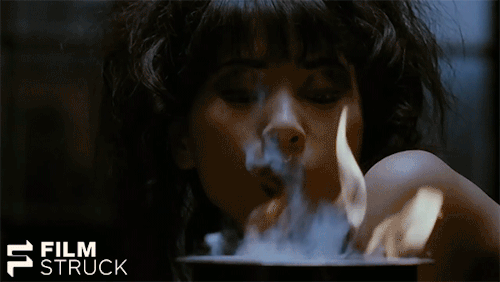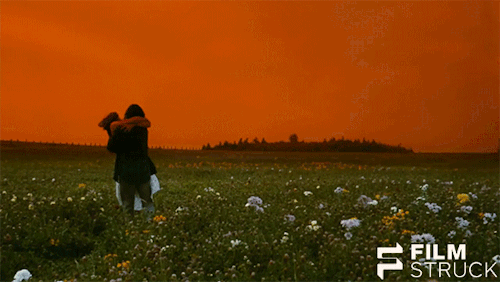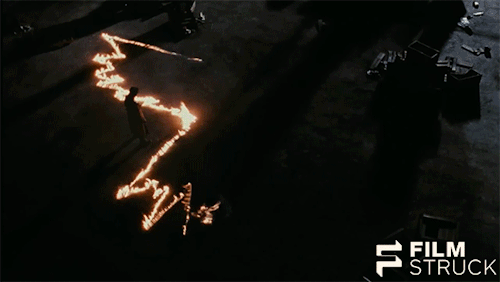filmstruck:Remembering THE CROW (’94) by Susan DollAs super hero films clean up at the multiplexes,
filmstruck:Remembering THE CROW (’94) by Susan DollAs super hero films clean up at the multiplexes, I cringe at how such uninspired, colorless CGI-fests could do so well at the box office. But, don’t get me wrong. Despite this remark, and others I have made in the past, I don’t dislike the comic book genre. I dislike what it has become under the iron grips of Marvel and DC and their devotion to a single demographic.I can single out favorites in the genre going all the way back to THE BAT (’26), a silent film directed by Roland West that was likely an influence on Batman creator Bill Kane. Speaking of Batman, I greatly admire Tim Burton’s interpretations of the brooding, cowled superhero in BATMAN (’89) and BATMAN RETURNS (’92). I also like Christopher Nolan’s reboot of the Batman character, though I prefer Burton’s. One of my all-time favorite comic book films, THE CROW (’94), is currently streaming on FilmStruck. What all these films share in common is an understanding of the artistic aesthetic of the original source material—a stripped-down, graphic quality that exploits angles, lighting and composition. These films are dependent on mise-en-scène, a traditional cinematic technique referring to the look and feel of a film controlled by the director, production designer and cinematographer. Further, the directors of these older comic book films knew and appreciated the visual language and symbolism of cinematic mise-en-scène, which is based in German Expressionism. On the other hand, the most recent examples are awash in computer-generated imagery (CGI), giving them a brassy, hollow look that makes many of them indistinguishable from each other. THE CROW was based on James O’Barr’s graphic novel, a darkly romantic tale of violence, poetry and rock ‘n’ roll. Brandon Lee, son of martial arts legend Bruce Lee, stars as Eric Draven, lead singer in a rock band. Eric and his girlfriend, Shelly (Sofia Shinas), plan to marry on Halloween, but on the night before—called Devil’s Night in the Midwest—they are brutally murdered by a gang of thugs working for Top Dollar (Michael Wincott). A year later, a crow ferries Eric from the land of the dead to seek vengeance on the men who perpetrated the double homicide. Director Alex Proyas amplified the novel’s melancholy tone with one of the darkest visual designs I have ever seen. Every scene is shot in high-contrast or low-key lighting; there isn’t one shot rendered in high-key lighting. The lack of gray scale recalls the graphic nature of comic books and graphic novels but also gives depth and richness to the images. The darks are not merely negative space but pools of shadows that seem to sculpt the buildings and alleyways that make up Proyas’s version of Detroit. THE CROW was cinematographer Dariusz Wolski’s second feature film after a decade of music videos and commercials. Born in Poland, he attended the renowned National Film School in Lodz, which specializes in acting, directing and cinematography. His talent for expressive lighting and striking imagery is evident in the films of directors who have consistently sought out his skills, including Gore Verbinski in his PIRATES OF THE CARIBBEAN (’03, ’06, ’07) trilogy and Ridley Scott. Web commentators have compared the visual style to film noir, a valid comparison because THE CROW is a dystopic interpretation of the big city. The corruption associated with the urban world in noir is magnified tenfold in THE CROW: Nothing is left in the city but decay, decadence, and drugs. There is no art, no culture, no refinement. The large Gothic church that anchors the neighborhood is empty of both priests and parishioners. Only a hot-dog stand frequented by the last good cop in Detroit looks inviting, with its warm interior lighting and rich colors. THE CROW was produced and released in the early 1990s. By this time, the inner-city decay that had begun in the 1970s had turned into urban blight. The film reflects a widespread negative view of the big city just before a return to urban centers began to restore neighborhoods and focus attention on urban growth and renewal. No city was more affected by urban blight than Detroit; it’s very name was synonymous with a dystopic view of the inner city. Proyas and production designer Alex McDowell played on that reputation by offering a hellish interpretation of Detroit, where burning buildings constantly lit up the night sky.THE CROW makes effective use of German Expressionist symbolism, adding considerably to a film in which dialogue is minimal and characters speak in melancholy phrases of portent or despair. The first image of Eric Draven is a bird’s-eye view of his dead body splayed on the sidewalk, a hint that fate or God is looking down and has something else in store for him. Visual clues of Draven’s doppelganger status are in most of his scenes. A doppelganger means a character has two sides to him; in this case, Draven is both living and dead. His large shadow is cast on the alley wall as he stumbles through the streets after rising from the grave; it is a literal depiction of his “dark side.” Close-ups reveal his face half lit and half in shadow. Most telling is the shot when Eric looks into a mirror, seeing his dark side for the first time. He cracks the mirror with his fist, distorting his reflected image. Draven’s abandoned, dilapidated apartment, which he shared with Shelly, looks like a set straight out of THE CABINET OF DR. CALIGARI (’19). Bars and bar shadows tell us that Eric is trapped in his fate; collapsed beams and destroyed furniture created a set design filled with diagonals and sharp shapes, reflect the chaos and instability of Eric’s twisted mind. That kind of direct connection between set design and narrative is missing from many contemporary superhero films, in which producers are more concerned with the bells and whistles of CGI than effective visual storytelling. Older readers will recall that THE CROW was notorious because of the accidental death of Brandon Lee on set. The exact account of what happened is available to read in detail online: The short version is that a prop gun with a partial live round was accidentally used in the scene in which Eric Draven is shot. In a horrible version of art imitating life, Brandon Lee was shot dead in the scene in which his fictional character was shot dead. The film was near completion, with only a few production days left on the schedule. The producers decided to complete and release the film, using an early version of CGI to meld Lee’s face onto a stunt double’s body for the one scene that could not be rewritten. Lee was just beginning his career in action-driven films, revealing the charm and charisma of a bona fide movie star. THE CROW would have likely propelled him into superstardom and elevated him out of the shadow of his famous father. If ever a film was haunted by the performance of its star, THE CROW is it. But, that was decades ago. Younger viewers are likely unfamiliar with Brandon Lee and the circumstances of his death. Ultimately, that tragic event does not weigh as heavily on the film like it once did. THE CROW stands on its own as a beautifully crafted comic book film with a heavy atmosphere, moody mise-en-scène and a serious treatment of the material. -- source link
Tumblr Blog : filmstruck.tumblr.com
#the crow#alex proyas#brandon lee




